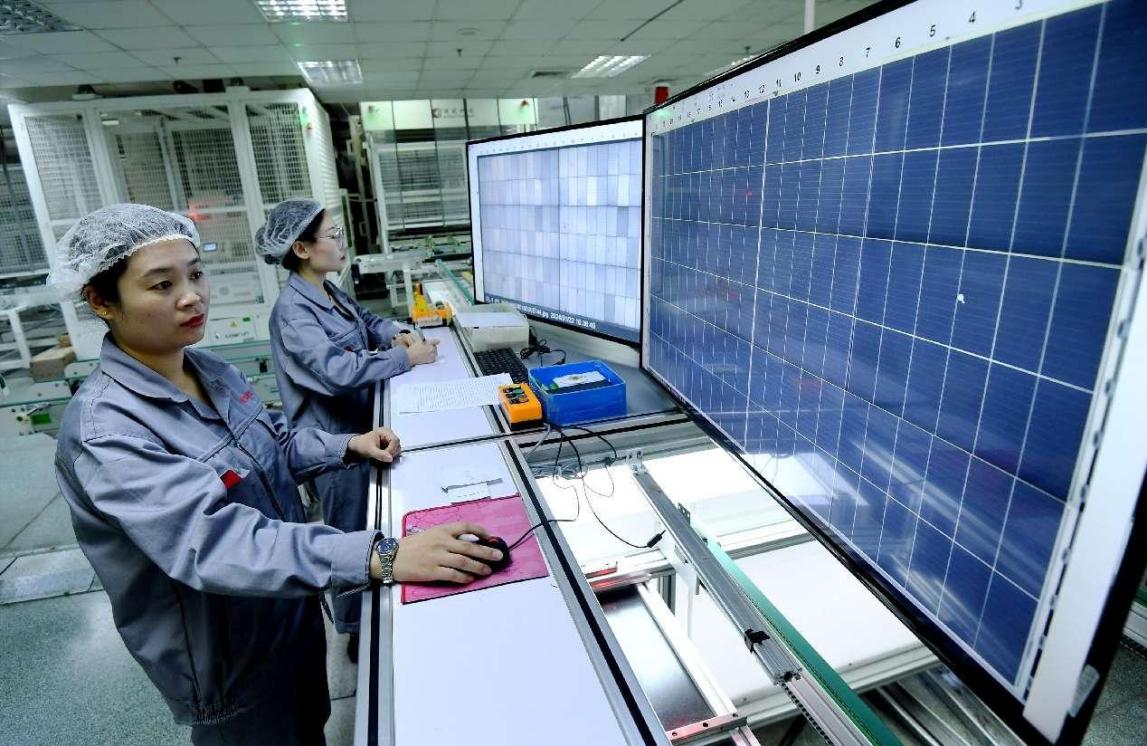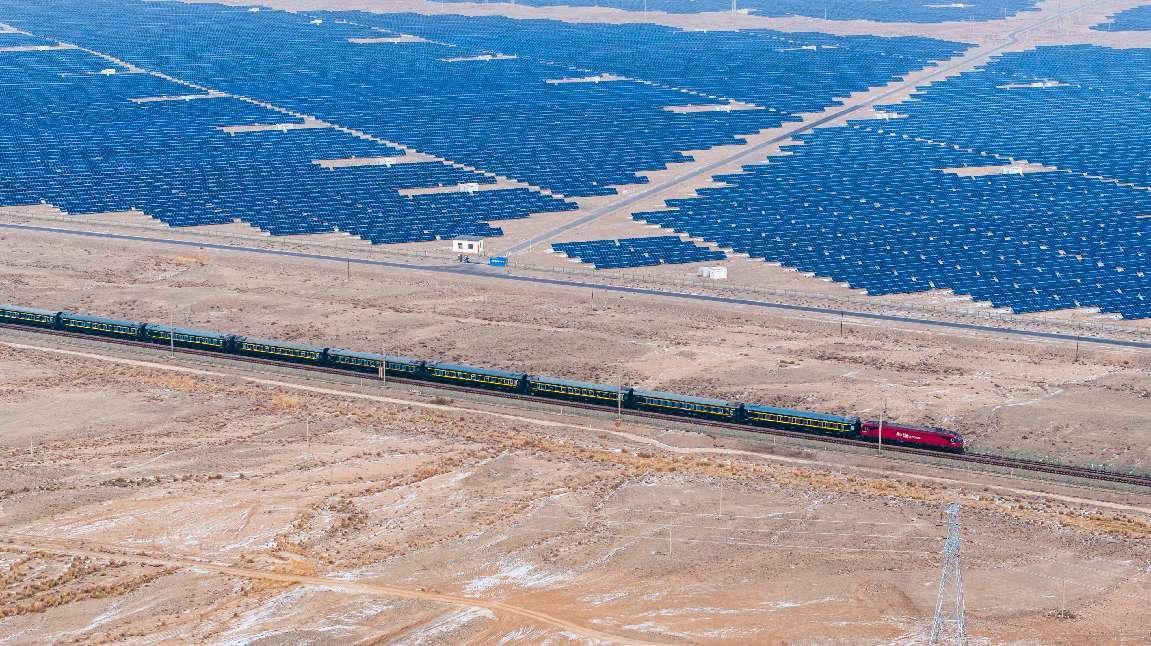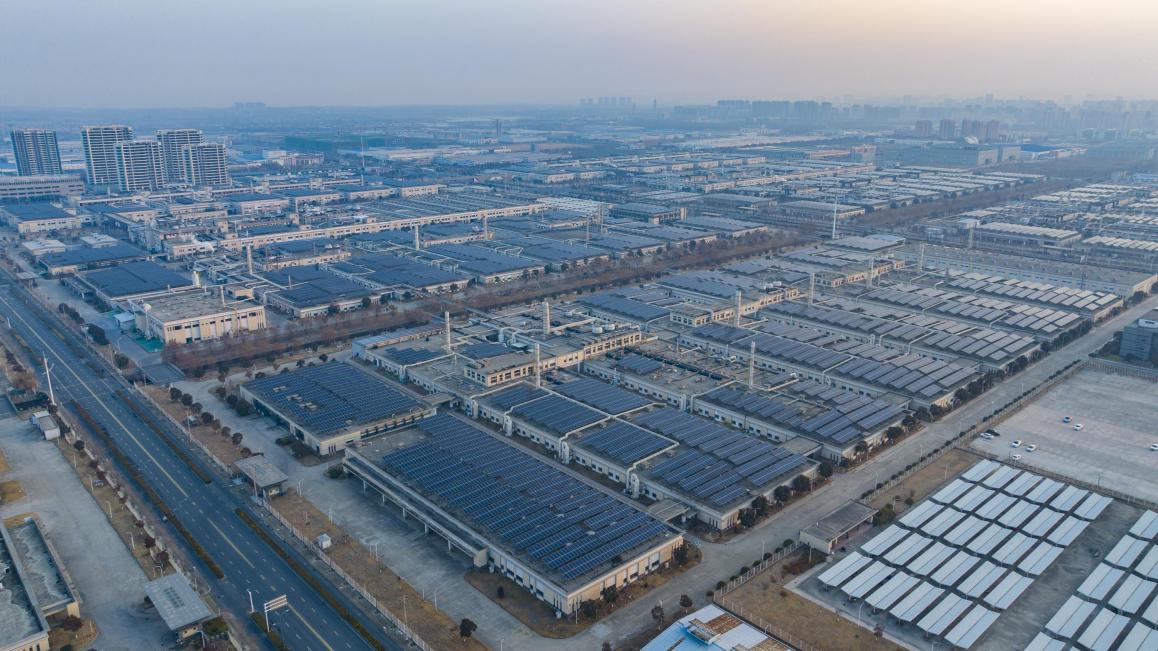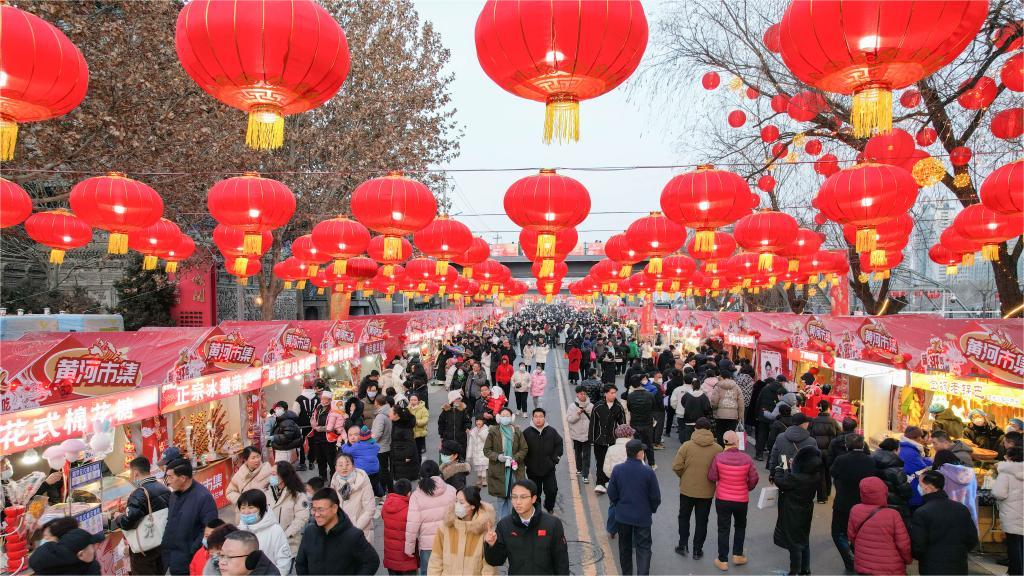China's PV industry sees accelerated development, expanded overseas market

Workers of an energy technology company in Zhulu, north China's Hebei province, manufacture solar modules to be exported. (People's Daily Online/Chen Xiaodong)
In the city of Shannan, located on a plateau at an elevation of 4,994 to 5,100 meters in southwest China's Xizang autonomous region, nearly 80,000 solar panels were glistening under the sunlight.
This solar farm was connected to the grid and started generating electricity on Dec. 30, 2023. It is the world's highest solar project and supplies electricity for nearly 4,000 households.
"The project employs our ultra high-power components, and from order placement to delivery completion, it took just over a month," said Gao Jifan, chairman of TrinaSolar Co., Ltd. (TrinaSolar).
Gao, who came to Xizang 22 years ago, shared his experience of building photovoltaic (PV) power stations in the autonomous region.
"Back then, the equipment had to be carried on horses to construction sites. An average PV power station was only around 20 kilowatts, with a few dozen solar panels, which were imported," Gao said.

A train passes by a huge solar farm in Jiuquan, northwest China's Gansu province. (People's Daily Online/Liu Yongquan)
At that time, China's PV industry was just starting out, with only a handful of companies manufacturing PV products. TrinaSolar, which has a history of only five years, didn't even have a component factory back then and its annual revenue was just about 100 million yuan ($14.07 million).
However, in the first three quarters of 2023 alone, the company's revenue exceeded 80 billion yuan, with a year-on-year growth of over 40 percent. It's profit more than doubled.
China's PV industry has undergone a remarkable transformation, from a situation where raw materials, equipment, and markets were heavily reliant on foreign sources to becoming a global leader with nearly half of the world's installed solar power capacity and over 80 percent of major manufacturing output.
According to data released by the China Photovoltaic Industry Association, the manufacturing output of the PV sector exceeded 1.3 trillion yuan in the first ten months of 2023. In the first three quarters of 2023, the export volume of silicon wafers, solar cells, and modules increased by 88.3 percent, 74.3 percent, and 33 percent year on year, respectively.
Behind the steady expansion of the PV industry lie the opportunities brought about by global green and low-carbon transformation and China's efforts to achieve its "dual carbon" goals - reaching peak carbon emissions by 2030 and carbon neutrality by 2060.
At the same time, the expansion of the industry is also the dividend resulting from companies accelerating technological iteration and driving cost reduction.
In December 2023, Chinese solar technology giant LONGi set a new world record of 27.09 percent for the efficiency of crystalline silicon heterojunction back-contact (HBC) solar cells, breaking the 26.81 percent efficiency record it announced in November 2022.
The secret to these breakthroughs comes from continuous research and development. On one hand, the company explores different promising technological paths and industry sectors; on the other hand, it focuses its efforts on scaling up the production of selected technologies.
Over the past five years, LONGi has invested over 18 billion yuan in research and development.
Since 2014, Chinese companies have shattered records in PV cell conversion efficiency for over 50 times. Cao Renxian, secretary-general of the China Photovoltaic Industry Association and chairman of Sungrow Power Supply Co., Ltd., noted that with the accelerated industrialization of several advanced technologies, the conversion efficiency of perovskite and tandem solar cells made new highs last year, marking China's global leadership in PV technology.
Guided by the "dual carbon" goals, the PV sector is deeply integrating with industries, construction, transportation, and other fields. Through the innovation in application models, the market continue to expand in depth and breadth.

Photo shows solar panels on the buildings of a company in Suzhou Suqian Industrial Park, east China's Jiangsu province. (People's Daily Online/Ma Haifeng)
On Dongyu Island in south China's Hainan province, where the permanent venue of the Boao Forum for Asia is located, hotels and parking lot shelters have been equipped with building-integrated photovoltaics (BIPV).
Unlike traditional installations where solar panels are mounted on rooftop brackets, the roofs of such buildings on the island are composed of inner panels, insulation cotton, outer panels, and a photovoltaic power generation layer.
BIPV allows solar panels to become a part of buildings, eliminating the need for separate pathways during installation. This means that the same roof area can accommodate larger-capacity components, resulting in an increase in electricity generation of approximately 15 percent.
Building overseas factories has become a prominent trend in the Chinese PV industry over the past two years. TCL Zhonghuan Renewable Energy Technology Co.,Ltd. is actively promoting the investment and construction of a solar crystalline wafer factory in Saudi Arabia. JA Solar plans to invest approximately 2.7 billion yuan to build a 5-gigawatt high-efficiency battery project in Vietnam. Canadian Solar has established a 5-gigawatt PV module production facility in Texas, United States.
Liu Yiyang, deputy secretary-general of the China Photovoltaic Industry Association, noted that currently, PV companies are increasingly establishing factories overseas. The destinations have expanded from Southeast Asia to include markets such as the United States, the Middle East, and Indonesia.
The trend of expanding overseas production capacity has led to more involvement in the entire supply chain. "Moreover, the focus has shifted from solely exporting products to providing production, management, branding, and services, aiming to build a global cooperation and mutually beneficial ecosystem." Liu added.
"PV products are transitioning from a 'made in China, sold globally' model to a 'made globally, sold globally' one. Looking ahead, it is necessary to build a high-quality ecosystem for the coordinated development of the PV industry, actively integrate into the global industrial system, and engage in international cooperation in areas such as green energy." said Gao.
Photos
Related Stories
- New PV project connected to grid in NW China
- Cerbong photovoltaic power station in Xizang highest altitude in the world
- 900 MW photovoltaic project launched on Qinghai-Tibet Plateau
- China's PV industry posts robust growth in Sept-Oct
- East China to put PV, gas-film integrated power station into operation
- China's installed capacity of household photovoltaic power tops 100 mln kW
Copyright © 2024 People's Daily Online. All Rights Reserved.









